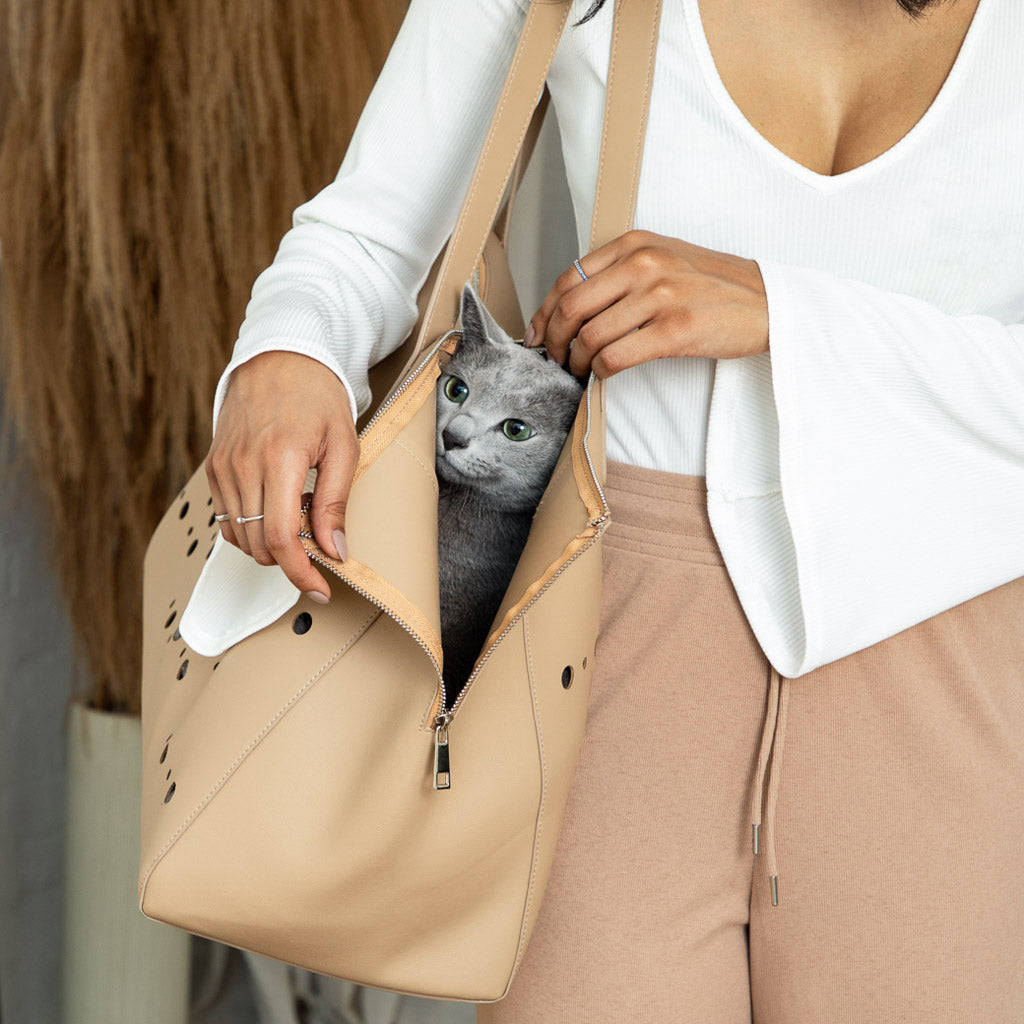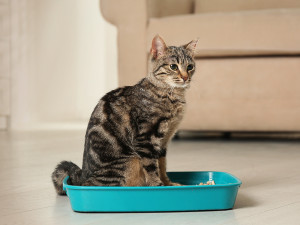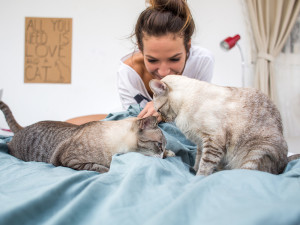Your Cat Doesn’t Have to Hate Their Carrier
A behaviourist’s six surefire steps to training a cat to go in a carrier
Your cat might want their true feelings to be shrouded in absolute secrecy at all times, but there are some moments when even your emotionally guarded feline child is very direct about they want. For example, they do not want to go in their carrier. Carrier means the car, or the vet, or somewhere that is not their safe, cosy home. When they see you get out that dreaded box or bag, they look at you like, “Not today, Satan.”
It doesn’t have to be this way.
Cats can be trained to enter a carrier willingly and to be comfortable in that space. It’s worth the effort. Training cats to enter and spend time in a carrier reduces stress in cats during car rides and also makes vet visits shorter, according to 2018 research published in Applied Animal Behaviour Scienceopens in new tab. Using a carrier can also avoid a lot of difficulties in the case of an emergency.
The basic plan
Training cats to accept and even like a cat carrier requires positive reinforcement, lots of treats, and many short sessions (just a minute or two each time) over multiple weeks. Always tailor the training to what the cat can do in that moment, not what you wish the cat would do in that moment. Never force or coerce the cat – keep the training environment happy, positive and fun, even if that means progressing more slowly than anticipated. That will make training go faster in the long run, limit any setbacks that will hamper the process, and make it a better experience for both you and your cat. The goal is to create a lifetime carrier-lover of your cat, not to insist your cat get into the carrier today.
Step-by-step: train your cat to enter the carrier
1. Bring the cat carrier into a space in your home where your cat spends time
Don’t fall into the trap of keeping the cat carrier in a cupboard or basement and only bringing it out right before vet visits. That builds bad associations rather than good ones. If kept in storage, the carrier will have an unfamiliar smell, which makes it harder for your cat to like it or want to enter it.
2. Make the cat carrier appealing to your cat
Place cosy blankets inside. Spray the inside with Feliwayopens in new tab, which lowers anxiety and stress in cats. Put treats around the carrier, and also inside near the entrance. Teach your cat to associate the inside of the carrier with treats and with favourite toys they can snuggle.
3. Have your cat enter the carrier willingly – never with force or pressure
Toss treats and toys farther into the carrier after your cat is happily eating treats near the entrance. It’s much better to have your cat enter the carrier partway to get treats than to tentatively and nervously go in all the way to reach treats near the back.
4. Increase the time your cat spends in the carrier
Get your cat used to being in the carrier for longer periods of time. Once your cat will go in willingly, start giving treats after they enter to add to the time they spend inside. Gradually extend the length of time your cat is happily in the carrier over several training sessions.
5. Teach your cat to be comfortable in the carrier with the door closed
Start by moving the door. Give treats after moving the door in one session, then after closing the door, but only leave it closed for a second or less in later sessions. Extend the time your cat is in there with the door shut during subsequent sessions, always offering treats.
6. Acclimatise your cat to travelling in the carrier over multiple sessions
Lift the carrier, give treats, and then put the carrier down. Take the carrier to the car and give treats, but don’t start the car. Then start the car, give treats, and turn the car off. Finally, begin to drive and have someone else in the car continue to give treats to the cat, so you can focus on the road.
Your cat is now ready to go places, safely, securely and happily. Now, with the carrier removed from your cat’s ‘Things I Despise’ list, there’s more room for barking dogs, water and humans who tell them they can’t turn the couch into a scratching post.









